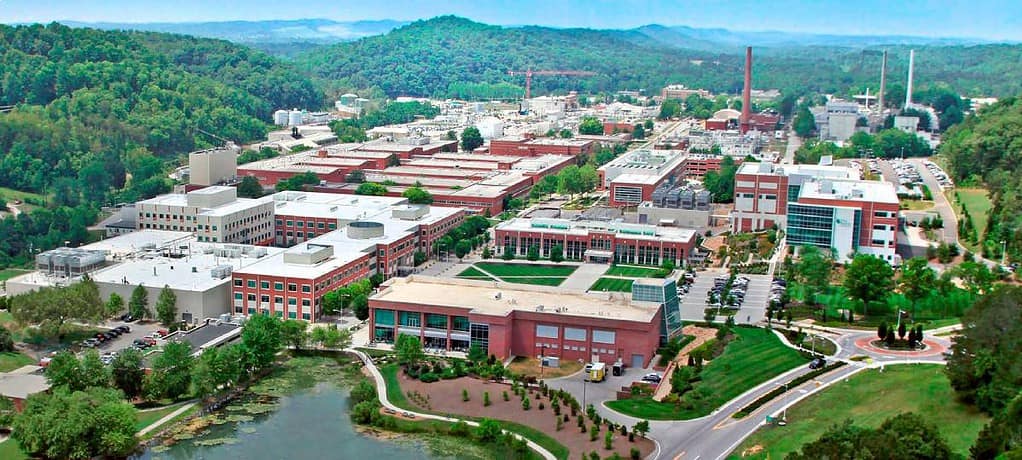Frontier’s improved speed marks a jump of roughly 150 petaflops, or 150 quadrillion calculations per second — roughly equivalent to the performance of its predecessor supercomputer Summit, which was decommissioned last week.
“We could already solve amazingly large problems on Frontier — the biggest science problems on the planet,” said Al Geist, an ORNL Corporate Fellow and Frontier project director. “This year, we’ve basically picked up the power of another supercomputer (like Summit).”
Frontier relies on a constellation of thousands of nodes, each a self-contained supercomputer of one CPU and four GPUs, connected by more than 90 miles of cable to enable them to communicate and work together on large problems. Frontier debuted in 2022 with more than 9,400 nodes, and crews have since added another 400 nodes for a current total of more than 9,800. The latest HPL benchmark ran across 9,500 nodes.
Geist estimates about half of Frontier’s improved score can be credited to the new nodes, which had been used for application development and testing by the Exascale Computing Project. The ECP oversaw development of software applications for Frontier and other exascale machines, such as the Aurora supercomputer at Argonne National Laboratory and the El Capitan supercomputer at Lawrence Livermore National Laboratory, and completed its work earlier this year.
On top of the new nodes and exascale experience gained by OLCF computing experts, Frontier boasts improvements to its math libraries developed by HPE, which built Frontier, and AMD, maker of the CPUs and GPUs that power Frontier.
Besides the updated HPL number, the Frontier team logged a new High-Performance Linpack-Mixed Precision, or HPL-MxP, score of 11.4 exaflops, or 11.4 quintillion calculations per second, running across all 9,800 nodes. That’s a jump of more than an exaflop from the previous HPL-MxP score of 10.2 exaflops.
The detailed simulations used to model such phenomena as cancer cells, supernovas, the coronavirus or the atomic structure of elements require 64-bit precision, a computationally demanding standard of accuracy. Machine-learning algorithms used for artificial intelligence typically require less precision — sometimes as little as 32-, 24- or 16-bit accuracy.
“This shows how capable Frontier is for AI problems,” Barker said. “The results we get from mixed-precision runs are equally accurate, but they’re reached in a different way, mathematically. For some questions, double precision will remain the standard, but at these potential speeds, we expect more researchers will start to explore what kind of results they can achieve via mixed precision. They’d like to take advantage of this ability to solve problems faster by a factor of 10, and our team knows how to make that happen.”
Frontier is an HPE Cray EX system with more than 9,800 nodes, each equipped with a third-generation AMD EPYC™ CPU and four AMD Instinct™ MI250X GPUs. The OLCF is a DOE Office of Science user facility.
UT-Battelle manages ORNL for DOE’s Office of Science, the single largest supporter of basic research in the physical sciences in the United States. DOE’s Office of Science is working to address some of the most pressing challenges of our time. For more information, visit https://energy.gov/science. – Matt Lakin
This Oak Ridge National Laboratory news article "Frontier supercomputer hits new highs in third year of exascale" was originally found on https://www.ornl.gov/news

